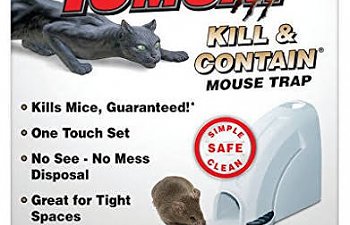POULTRY HEALTH
(Emergencies, Diseases, Treatments, Medicine Suggestions)

Disclaimer: Please note this information is offered as friendly advice only and, whilst we have made every effort to ensure it is accurate, We can not be held responsible if it proves not to be useful in your case!
BASIC EVALUATING POULTRY / HEALTH CHECKUP CHART
OPEN IMAGES TO EXPAND...

HOW TO BODY SCORE your birds CONDITION.
OPEN IMAGES TO EXPAND...

MERCK MANUAL
Physical examinations should be performed using a systematic approach:
1) Examine the head and neck. The comb should be bright red, slightly warm, turgid, and free of scabs and lesions. The bird should hold its head high and have good muscle tone.
2) Observe the eyes, and check for any discharge or cloudiness that may indicate illness. The eyes of a healthy adult bird should be clear and bright and have a copper-red iris and a round pupil with well-defined margins. Young chicks generally have a blue-gray iris. The eyelids should be free of swelling and opened wide.
3) Check external nares for discharge, crusts, and scratches. The beak should be smooth and free of cracks, and the tips should come to a point.
image below of growth in mouth by BYC Burleigh Chick

4) Open the mouth and check for ulcers and mucosal lesions on the tongue and mucosal membranes at the commissures of the beak.
5) Check the color of the earlobes to predict the color of the eggs the hens will produce. Hens that have white earlobes generally produce white eggs, and hens that have red earlobes generally produce brown or other pigmented eggs. 6) Evaluate the feathers to check for feather loss and how they are distributed. Loss of feathers around the back and back of the neck may indicate mating behavior by roosters. Check feathers at the base of the feather shaft to look for parasites such as lice, mites, and nits (lice egg packets). Feathers around the vent should be clear and free of blood or feces. Pasting of the vent with loose feces may indicate enteric disease. Check for scabs and blood around the vent, which are evidence of vent pecking and cannibalism.
7) The two small bones at the sides of the vent are the pubic bones. They should be flexible and have space in between. If hens are in lay, this distance should be the width of three or four fingers. When the hen is not laying, the pubic bones are usually stiff and close together (distance between is one finger width or less).
8) Check the legs and feet. The scales should be smooth and closely adhered to each other. If scales are raised and crusty, there may be a scaly leg mite infestation. Check the footpads for scratches, swellings, or ulcers caused by footpad dermatitis or pododermatitis (bumblefoot).
POULTRY HEALTH TOOL
The Poultry Tool gives the latest insights on the 40+ most common poultry diseases, focusing on causes, clinical signs and proven treatment and control measures to take in account. CLICK HERE TO GO TO THE SITE!

DISEASE PREVENTION TIPS: CLICK HERE
Preventive Medicine for Backyard Poultry Flocks CLICK HERE
CLEAN THAT COOP!
Decontaminating your poultry house is crucial in order to prevent DISEASE!
Marek’s disease, mycoplasma, respiratory viruses, E.coli, mites, and other poultry health problems. Even more important is the control of Salmonella Enteritidis (SE), especially in laying hens. There is also issues with Parasites, like mites lice cocci etc. CLICK HERE FOR TIPS ON CLEANING YOUR COOP!
LIME IN POULTRY HOUSES
(ELIMINATE ODORS, CONTROL PATHOGENS & REDUCE FLY PROBLEMS) ONLY use AG LIME!! Throw some down after we clean coops before shavings and then preth dust the top of shavings, please read in full! It is made from crushed limestone and its primary benefit is that it neutralizes soil pH and eliminates odors. In the case of your chicken coop, acidic soil will have been caused by chicken poop. If your chicken coop is sitting on the ground and does not have a floor, using lime on the soil will help promote the growth of grass and plants. CAUTION: Lime is caustic to organic matter and destroys debris in addition to pathogens. Lime also burns the footpads of birds if it is left on the ground or floor, so add shavings afterward. It is important to take animals out of an area before treating the area with lime. Also, working with lime is extremely dangerous. Dust inhaled or exposed to the eyes can cause severe burning of the eyes and mucous membranes. When using lime, poultry producers should wear personal protective equipment. READ IN FULL post #109933

GET RID OF THOSE RODENTS & PREVENTION!
Rodents not only physically damage the building structures and equipment but they can also break and eat eggs and kill young chicks. Rodents are also major vectors (carriers) and reservoirs of poultry and zoonotic pathogens (pathogens that can be spread from animals to humans), including Pasteurella multocida, Salmonella typhimurium, S. enteritidis and influenza and infectious bursal disease viruses. After cleaning and disinfection of a poultry house, mouse populations can remain infected with bacteria and viruses that infect poultry for at least 10 months. Rodents also carry parasites such as lice, mites and fleas. In addition, rodents cause general nuisance for birds in the house due to their noise and movements. The birds may be frightened, which results in poor performance.
A rodent control program that includes sanitation, rodent-proofing, population reduction, and evaluating and monitoring the rodent situation should be a critical part of every poultry farm’s biosecurity and overall management program.
Rodent Control: 7 Ways To Keep Mice And Rats Out of the Coop CLICK HERE
Rodent Control and how to tell MICE FROM RATS via droppings etc. CLICK HERE
Common rodenticides and their dose requirements are listed in Table CLICK HERE
RATS MICE How to Build a “Stairway to Heaven” click HERE
DIY Small animal Traps post #71895
Colony Trap Plans CLICK HERE

VACCINATION:
Small Flock, Backyard, Lifestyle Vaccines.pdf
Vaccination of Small Poultry Flocks CLICK HERE
See the tables for recommended vaccination programs Merck VET: CLICK HERE
Mareks VACCINE Effectiveness: CLICK HERE
Mareks vaccine Personal Experience post #2880

Frostbite, Prevention & Treatment CLICK HERE

First AID & Avian VET Search Links
Association of Avian Vets CLICK HERE
Waterfowl Veterinarian Directory CLICK HERE
EMERGENCY & Supportive Care, Fluid Therapy & Tube Feed, antibiotics etc. CLICK HERE
How to Provide Emergency and Supportive Care* CLICK HERE
Step-by-Step Tube Feeding guide with images CLICK HERE & CLICK HERE
Dehydration

Avian fluid therapy Not as difficult as you think! CLICK HERE
Replacement therapy video CLICK HERE
EMERGENCY & Supportive Care, Fluid Therapy & Tube Feed, antibiotics etc. CLICK HERE
Fluid replacement therapy Casportpony CLICK HERE
First Aid KIT CLICK HERE
Casportpony First aid kit Suggestions CLICK HERE
Brooder/hospital cage:CLICK HERE
Hand-feeding Methods & Tools CLICK HERE
Avian oral speculum post #33988
Bargain vitamins and electrolytes from Jeffers post #18098
REMOVING SPURS VIDEO EASY CLICK HERE

HELP My chicken has been scalped!
Hawk12 post #72054 Bjs post #72071
Another Chicken has been scalped! post #28229 post #28239 post #28248 post #28253 post #28260 post #30106

Wry Neck
Crook Neck, Torticollis, Stargazing, Twisted Neck, Limber Neck CLICK HERE
A silkies timeline with wry neck & many links for wry neck treatments CLICK HERE
Poultry Podiatry
Treatments for Leg Problems in Chickens & other Poultry CLICK HERE
Slipped tendon (perosis) CLICK HERE
Broken legs & splinting post #144129 & this pdf

BUMBLEFOOT “Bumblefoot" is a form of pododermatitis (foot inflammation)
Prevention and Treatment AVIAN MEDICINE CLICK HERE PAGE 10
Chicken CHICK bumblefoot article CLICK HERE
Bumblefoot How To Treat Your Chickens With Surgery Graphic Pics CLICK HERE

Uploaded By: Fanci Feathers Marans
Washing/Bathing Chickens
How and When to Give a Chicken a Bath CLICK HERE
How to Give a Chicken a Bath - Tilly's Nest
Chicken Keeping Basics - How To Bathe a Chicken - CLICK HERE YouTube
SHOW BATHING PREPS CLICK HERE
DISEASES, DIAGNOSIS & TREATMENT

MEDICINES
Medicine Chart for Poultry Click HERE
Home Remedies post #14543
PARASITES, COCCIDIA, LICE, MITES, ETC.
ASPIRIN SOLUTION, ASTRINGENT SOLUTION,COPPER SULFATE SOLUTION,
LAXATIVE SOLUTIONS, NUTRIENT SOLUTIONS,PARASITE (INTERNAL) SOLUTIONS, PESTICIDE SOLUTIONS, SANITIZING SOLUTIONS
http://msucares.com/poultry/diseases/solutions.html
The following solutions have been used as supportive treatments by poultry and game bird producers. They are intended as aids in treating the described conditions

NECROPSY (autopsy)
(fix SECTION and link to KATS pages)
How to Send a Bird for a Necropsy post #81844 post #149474
DIY necropsy https://www.backyardchickens.com/t/...w-host-sally-sunshine/129880_20#post_17335228
necropsy lab finder post #14628
Avian Necropsy Examination 11 VIDEOS CLICK HERE STEP BY STEP
Avian Pathology IMAGES info CLICK HERE
Kathy necropsies https://www.backyardchickens.com/t/1069296/lame-chicken-exam-necropsy-pictures-added
Disclaimer: Please note this information is offered as friendly advice only and, whilst we have made every effort to ensure it is accurate, we can not be held responsible if it proves not to be useful in your case!
FOR MORE Poultry INFORMATION AND NOTES PLEASE CLICK HERE for Complete Guide to Incubation, Poultry Raising, Care and much more!
(Emergencies, Diseases, Treatments, Medicine Suggestions)
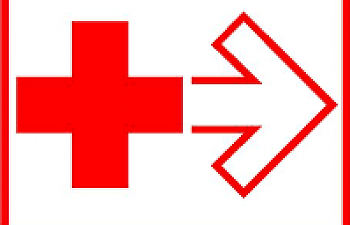
Disclaimer: Please note this information is offered as friendly advice only and, whilst we have made every effort to ensure it is accurate, We can not be held responsible if it proves not to be useful in your case!
BASIC EVALUATING POULTRY / HEALTH CHECKUP CHART
OPEN IMAGES TO EXPAND...
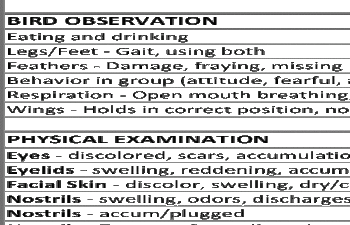
HOW TO BODY SCORE your birds CONDITION.
OPEN IMAGES TO EXPAND...
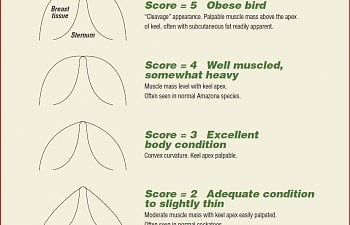
MERCK MANUAL
Physical examinations should be performed using a systematic approach:
1) Examine the head and neck. The comb should be bright red, slightly warm, turgid, and free of scabs and lesions. The bird should hold its head high and have good muscle tone.
2) Observe the eyes, and check for any discharge or cloudiness that may indicate illness. The eyes of a healthy adult bird should be clear and bright and have a copper-red iris and a round pupil with well-defined margins. Young chicks generally have a blue-gray iris. The eyelids should be free of swelling and opened wide.
3) Check external nares for discharge, crusts, and scratches. The beak should be smooth and free of cracks, and the tips should come to a point.
image below of growth in mouth by BYC Burleigh Chick
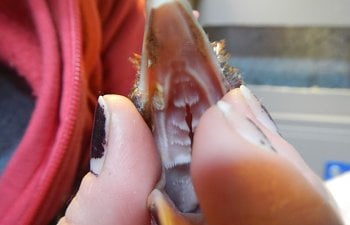
4) Open the mouth and check for ulcers and mucosal lesions on the tongue and mucosal membranes at the commissures of the beak.
5) Check the color of the earlobes to predict the color of the eggs the hens will produce. Hens that have white earlobes generally produce white eggs, and hens that have red earlobes generally produce brown or other pigmented eggs. 6) Evaluate the feathers to check for feather loss and how they are distributed. Loss of feathers around the back and back of the neck may indicate mating behavior by roosters. Check feathers at the base of the feather shaft to look for parasites such as lice, mites, and nits (lice egg packets). Feathers around the vent should be clear and free of blood or feces. Pasting of the vent with loose feces may indicate enteric disease. Check for scabs and blood around the vent, which are evidence of vent pecking and cannibalism.
7) The two small bones at the sides of the vent are the pubic bones. They should be flexible and have space in between. If hens are in lay, this distance should be the width of three or four fingers. When the hen is not laying, the pubic bones are usually stiff and close together (distance between is one finger width or less).
8) Check the legs and feet. The scales should be smooth and closely adhered to each other. If scales are raised and crusty, there may be a scaly leg mite infestation. Check the footpads for scratches, swellings, or ulcers caused by footpad dermatitis or pododermatitis (bumblefoot).
POULTRY HEALTH TOOL
The Poultry Tool gives the latest insights on the 40+ most common poultry diseases, focusing on causes, clinical signs and proven treatment and control measures to take in account. CLICK HERE TO GO TO THE SITE!
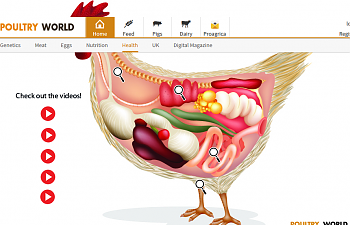
DISEASE PREVENTION TIPS: CLICK HERE
Preventive Medicine for Backyard Poultry Flocks CLICK HERE
CLEAN THAT COOP!
Decontaminating your poultry house is crucial in order to prevent DISEASE!
Marek’s disease, mycoplasma, respiratory viruses, E.coli, mites, and other poultry health problems. Even more important is the control of Salmonella Enteritidis (SE), especially in laying hens. There is also issues with Parasites, like mites lice cocci etc. CLICK HERE FOR TIPS ON CLEANING YOUR COOP!
LIME IN POULTRY HOUSES
(ELIMINATE ODORS, CONTROL PATHOGENS & REDUCE FLY PROBLEMS) ONLY use AG LIME!! Throw some down after we clean coops before shavings and then preth dust the top of shavings, please read in full! It is made from crushed limestone and its primary benefit is that it neutralizes soil pH and eliminates odors. In the case of your chicken coop, acidic soil will have been caused by chicken poop. If your chicken coop is sitting on the ground and does not have a floor, using lime on the soil will help promote the growth of grass and plants. CAUTION: Lime is caustic to organic matter and destroys debris in addition to pathogens. Lime also burns the footpads of birds if it is left on the ground or floor, so add shavings afterward. It is important to take animals out of an area before treating the area with lime. Also, working with lime is extremely dangerous. Dust inhaled or exposed to the eyes can cause severe burning of the eyes and mucous membranes. When using lime, poultry producers should wear personal protective equipment. READ IN FULL post #109933
GET RID OF THOSE RODENTS & PREVENTION!
Rodents not only physically damage the building structures and equipment but they can also break and eat eggs and kill young chicks. Rodents are also major vectors (carriers) and reservoirs of poultry and zoonotic pathogens (pathogens that can be spread from animals to humans), including Pasteurella multocida, Salmonella typhimurium, S. enteritidis and influenza and infectious bursal disease viruses. After cleaning and disinfection of a poultry house, mouse populations can remain infected with bacteria and viruses that infect poultry for at least 10 months. Rodents also carry parasites such as lice, mites and fleas. In addition, rodents cause general nuisance for birds in the house due to their noise and movements. The birds may be frightened, which results in poor performance.
A rodent control program that includes sanitation, rodent-proofing, population reduction, and evaluating and monitoring the rodent situation should be a critical part of every poultry farm’s biosecurity and overall management program.
Rodent Control: 7 Ways To Keep Mice And Rats Out of the Coop CLICK HERE
Rodent Control and how to tell MICE FROM RATS via droppings etc. CLICK HERE
Common rodenticides and their dose requirements are listed in Table CLICK HERE
RATS MICE How to Build a “Stairway to Heaven” click HERE
DIY Small animal Traps post #71895
Colony Trap Plans CLICK HERE
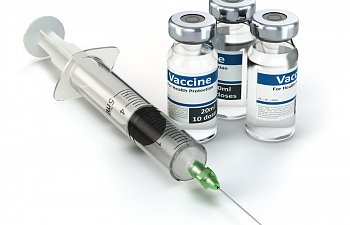
VACCINATION:
Small Flock, Backyard, Lifestyle Vaccines.pdf
Vaccination of Small Poultry Flocks CLICK HERE
See the tables for recommended vaccination programs Merck VET: CLICK HERE
Mareks VACCINE Effectiveness: CLICK HERE
Mareks vaccine Personal Experience post #2880
Frostbite, Prevention & Treatment CLICK HERE
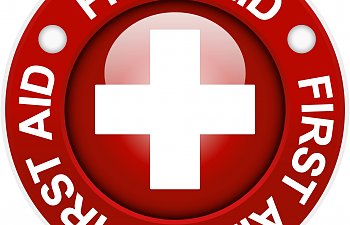
First AID & Avian VET Search Links
Association of Avian Vets CLICK HERE
Waterfowl Veterinarian Directory CLICK HERE
EMERGENCY & Supportive Care, Fluid Therapy & Tube Feed, antibiotics etc. CLICK HERE
How to Provide Emergency and Supportive Care* CLICK HERE
Step-by-Step Tube Feeding guide with images CLICK HERE & CLICK HERE
Dehydration
Avian fluid therapy Not as difficult as you think! CLICK HERE
Replacement therapy video CLICK HERE
EMERGENCY & Supportive Care, Fluid Therapy & Tube Feed, antibiotics etc. CLICK HERE
Fluid replacement therapy Casportpony CLICK HERE
First Aid KIT CLICK HERE
Casportpony First aid kit Suggestions CLICK HERE
Brooder/hospital cage:CLICK HERE
Hand-feeding Methods & Tools CLICK HERE
Avian oral speculum post #33988
Bargain vitamins and electrolytes from Jeffers post #18098
REMOVING SPURS VIDEO EASY CLICK HERE
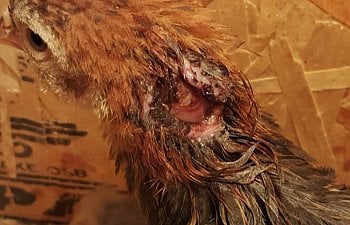
HELP My chicken has been scalped!
Hawk12 post #72054 Bjs post #72071
Another Chicken has been scalped! post #28229 post #28239 post #28248 post #28253 post #28260 post #30106
Wry Neck
Crook Neck, Torticollis, Stargazing, Twisted Neck, Limber Neck CLICK HERE
A silkies timeline with wry neck & many links for wry neck treatments CLICK HERE
Poultry Podiatry
Treatments for Leg Problems in Chickens & other Poultry CLICK HERE
Slipped tendon (perosis) CLICK HERE
Broken legs & splinting post #144129 & this pdf
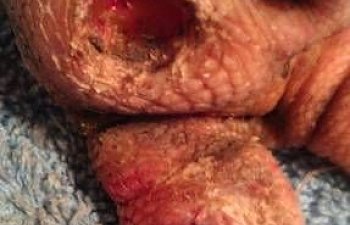
BUMBLEFOOT “Bumblefoot" is a form of pododermatitis (foot inflammation)
Prevention and Treatment AVIAN MEDICINE CLICK HERE PAGE 10
Chicken CHICK bumblefoot article CLICK HERE
Bumblefoot How To Treat Your Chickens With Surgery Graphic Pics CLICK HERE
Uploaded By: Fanci Feathers Marans
Washing/Bathing Chickens
How and When to Give a Chicken a Bath CLICK HERE
How to Give a Chicken a Bath - Tilly's Nest
Chicken Keeping Basics - How To Bathe a Chicken - CLICK HERE YouTube
SHOW BATHING PREPS CLICK HERE
DISEASES, DIAGNOSIS & TREATMENT
Common Poultry Diseases & TABLE AID diagnose/symptoms: CLICK HERE
Symptom & treatment recommendations PLUS NECROPSY : CLICK HERE
Handbook of diseases. Offers clear symptoms descriptions & photos. CLICK HERE
MERCK VET MANUAL: POULTRY CLICK HERE
VET ATLAS AVIAN DISEASE Search by Name, Lesion Loc, Exam Findings etc. CLICK HERE
COMMON SYMPTOMS & TREATMENTS especially tailored to wild birds. CLICK HERE
Field Manual of Wildlife Disease — General Field Procedures and Diseases CLICK HERE
Free newsletter avian post #144190
GLOSSARY OF POULTRY TERMS CLICK HERE
Symptom & treatment recommendations PLUS NECROPSY : CLICK HERE
Handbook of diseases. Offers clear symptoms descriptions & photos. CLICK HERE
MERCK VET MANUAL: POULTRY CLICK HERE
VET ATLAS AVIAN DISEASE Search by Name, Lesion Loc, Exam Findings etc. CLICK HERE
COMMON SYMPTOMS & TREATMENTS especially tailored to wild birds. CLICK HERE
Field Manual of Wildlife Disease — General Field Procedures and Diseases CLICK HERE
Free newsletter avian post #144190
GLOSSARY OF POULTRY TERMS CLICK HERE
MEDICINES
Medicine Chart for Poultry Click HERE
How to convert measurements for dosing medicines CLICK HERE
MERCK PHARMACOLOGY, Detailed info on medications & dosing rates CLICK HERE
Math and Medications CLICK HERE FOR HOW TO FIGURE THEM OUT!
Poultry Body AVERAGE WEIGHTS: CLICK HERE
Or visit Henderson's Chicken Breed Chart for weights of more breeds.
Clinical avian medicine GREAT BOOK post #144159
Avian Medicine: Principles and Applications GREAT BOOK post #144168
NATURAL CHICKEN REMEDIES CLICK HEREMERCK PHARMACOLOGY, Detailed info on medications & dosing rates CLICK HERE
Math and Medications CLICK HERE FOR HOW TO FIGURE THEM OUT!
Poultry Body AVERAGE WEIGHTS: CLICK HERE
Or visit Henderson's Chicken Breed Chart for weights of more breeds.
Clinical avian medicine GREAT BOOK post #144159
Avian Medicine: Principles and Applications GREAT BOOK post #144168
Home Remedies post #14543
PARASITES, COCCIDIA, LICE, MITES, ETC.
Kathys Parasite book, treatments post #30361 & CLICK HERE for AMAZON
Discussion on microscopes WHAT TO BUY for FECALS post #21450 post #21361
Cocci under the microscope post #58455
Mail in poop test for most farm animals CLICK HERE
Fecals for all animal types CLICK HERE
ALL of Kat's poop links CLICK HERE
COCCIDIA
COCCI Prevention Vaccines TREATMENTS Poo Samples post #70896
Cocci drugs post #145974
TAPEWORMS pics n treatment post #85132 post #85136 post #85165 post #85232

Picture by demerson
Poultry Lice Mites ID and treatments CLICK HERE
Controlling Mites in Your Poultry Flock click HERE
Lice and link #2 poultry dust post #11058 post #7815
FLEAS
Heart guard for dogs is Ivermectin & Pyrantel pamoate READ BEFORE USE post #26278
Fleas beneficial nematodes you can treat the dirt with at Walmart, 15 Million Flea Killing Beneficial Nematodes - Ecomask. CLICK HERE
https://www.backyardchickens.com/t/...ds-w-host-sally-sunshine/126160#post_17290475
Stuff on cayenne in feed post #144188
Fenbendazole and molting post #144313
CHEAP Poultry Dust!! post #154086

SCALY LEG MITES
Scaly leg mite discussion begins... and for some time post #25649 post #26110
Scaly leg mites kerosene and linseed oil post #58353
Citronella in my nest boxes. Not a single red mite issue post #37730
GAPEWORMS
How to check for gapeworms post #22898
BASIC TREATMENTS, MEDS & DOSAGES
for PARASITES
PARASITES be on a preventative schedule/treatment see post #18165
AMRPOLIUM AMPROL CORID COCCI MED DOSAGING CLICK HERE
Water Soluble Wormers CLICK HERE
Worms and Worming - Warning, Graphic Pictures and Videos CLICK HERE
To worm or not to worm post #29066 begins here post #26093 post #26098
Worming info thread post #154492
BIRTH DEFECTS CONVERSATION AND INFO ON WORMERS for hatching eggs!! post #25707 post #25706
Fenbendazole Wormer including paste equine wormer post #52183
Wazine worming Click HERE
Wormougel - 20g/L Praziquantel, 20g/L Oxfendazole most worms, including tapes post #55337
Albon 5% sulfadimethoxine, CLICK HERE
VERMOX Mebendazole , which is a wide dewormer post #26033 post #26038
Valbazen Wormer post #34459
Corid .post #26102
DE diatomaceous earth discussion starts here post #26058 post #26094
LONG discussion of IVERMECTIN DOSAGE! post #26228 post #26002 post #25671 post #25998 post #26001 post #26007 post #26010 post #26015 post #26018 post #26024 post #26025 TO post #26027 post #26236
PASTE IVERMECTIN post #26168 post #26181 post #26189 post #26228
Liquid Permethrin spray directly on chickens and in coops INFO and residual effects post #17296
Hydrogen peroxide kills bitey things post #17348
EGG BINDING & CROP ISSUES
Egg binding http://beautyofbirds.com/eggbinding.html
HOW TO CHECK FOR A STUCK EGG post #118490
What to do if an egg breaks inside a hen? CLICK HERE
Swollen CHICKEN BUTT watery balloon it could be a phenomena called Ascites post #25235 post #24807 size draining syringes post #29631
Salpingitis inflammation of the oviduct CLICK HERE
Impacted Crop Surgery Video post #45504
Discussion on microscopes WHAT TO BUY for FECALS post #21450 post #21361
Cocci under the microscope post #58455
Mail in poop test for most farm animals CLICK HERE
Fecals for all animal types CLICK HERE
ALL of Kat's poop links CLICK HERE
COCCIDIA
COCCI Prevention Vaccines TREATMENTS Poo Samples post #70896
Cocci drugs post #145974
TAPEWORMS pics n treatment post #85132 post #85136 post #85165 post #85232
Picture by demerson
Poultry Lice Mites ID and treatments CLICK HERE
Controlling Mites in Your Poultry Flock click HERE
Lice and link #2 poultry dust post #11058 post #7815
FLEAS
Heart guard for dogs is Ivermectin & Pyrantel pamoate READ BEFORE USE post #26278
Fleas beneficial nematodes you can treat the dirt with at Walmart, 15 Million Flea Killing Beneficial Nematodes - Ecomask. CLICK HERE
https://www.backyardchickens.com/t/...ds-w-host-sally-sunshine/126160#post_17290475
Stuff on cayenne in feed post #144188
Fenbendazole and molting post #144313
CHEAP Poultry Dust!! post #154086
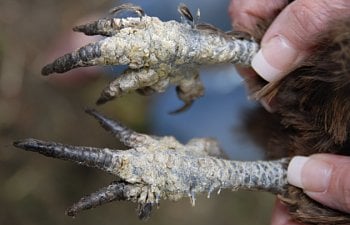
SCALY LEG MITES
Scaly leg mite discussion begins... and for some time post #25649 post #26110
Scaly leg mites kerosene and linseed oil post #58353
Citronella in my nest boxes. Not a single red mite issue post #37730
GAPEWORMS
How to check for gapeworms post #22898
BASIC TREATMENTS, MEDS & DOSAGES
for PARASITES
PARASITES be on a preventative schedule/treatment see post #18165
AMRPOLIUM AMPROL CORID COCCI MED DOSAGING CLICK HERE
Water Soluble Wormers CLICK HERE
Worms and Worming - Warning, Graphic Pictures and Videos CLICK HERE
To worm or not to worm post #29066 begins here post #26093 post #26098
Worming info thread post #154492
BIRTH DEFECTS CONVERSATION AND INFO ON WORMERS for hatching eggs!! post #25707 post #25706
Fenbendazole Wormer including paste equine wormer post #52183
Wazine worming Click HERE
Wormougel - 20g/L Praziquantel, 20g/L Oxfendazole most worms, including tapes post #55337
Albon 5% sulfadimethoxine, CLICK HERE
VERMOX Mebendazole , which is a wide dewormer post #26033 post #26038
Valbazen Wormer post #34459
Corid .post #26102
DE diatomaceous earth discussion starts here post #26058 post #26094
LONG discussion of IVERMECTIN DOSAGE! post #26228 post #26002 post #25671 post #25998 post #26001 post #26007 post #26010 post #26015 post #26018 post #26024 post #26025 TO post #26027 post #26236
PASTE IVERMECTIN post #26168 post #26181 post #26189 post #26228
Liquid Permethrin spray directly on chickens and in coops INFO and residual effects post #17296
Hydrogen peroxide kills bitey things post #17348
EGG BINDING & CROP ISSUES
Egg binding http://beautyofbirds.com/eggbinding.html
HOW TO CHECK FOR A STUCK EGG post #118490
What to do if an egg breaks inside a hen? CLICK HERE
Swollen CHICKEN BUTT watery balloon it could be a phenomena called Ascites post #25235 post #24807 size draining syringes post #29631
Salpingitis inflammation of the oviduct CLICK HERE
Impacted Crop Surgery Video post #45504
MAREKS
Mareks vaccine Personal Experience post #2880
Mareks and raising turkeys to help prevent it? post #35717
Mareks VACCINE Effectiveness: CLICK HERE
The Great Big Giant Marek's Disease FAQ CLICK HERE
RESPIRATORY ILLNESS & TREATMENTS
ANTIBIOTICS FOR BIRDS
Medicine Chart for Chickens & other Poultry CLICK HERE
Oxytetracyline and Tetracycline Powder Doses
Sinus infection post #139753 post #139764
Fungal Infections in Poultry CLICK HERE
Albon 5% sulfadimethoxine, post #71866
Oxytetracyline and Tetracycline Powder Doses post #154894
Fishmox for chickens? you betcha post #30338
Amoxicillin/Ampicillin is Birds post #30344
Baytril for Birds discussions: & Kathys example treatment Baytril is the brand name for Enrofloxacin, post #154894 AND CLICK HERE for BAYTRIL
Tylan CRD indications and Tylan dosage post #4606 & CLICK HERE
Various drugs will only treat bacteria that are sensitive to that drug post #30389
Drugs that can be used in Ducks - no prescription needed CLICK HERE
Meds for use in poultry post #143867 post #144182 post #144607
Solutions used for poultryMareks vaccine Personal Experience post #2880
Mareks and raising turkeys to help prevent it? post #35717
Mareks VACCINE Effectiveness: CLICK HERE
The Great Big Giant Marek's Disease FAQ CLICK HERE
RESPIRATORY ILLNESS & TREATMENTS
ANTIBIOTICS FOR BIRDS
Medicine Chart for Chickens & other Poultry CLICK HERE
Oxytetracyline and Tetracycline Powder Doses
Sinus infection post #139753 post #139764
Fungal Infections in Poultry CLICK HERE
Albon 5% sulfadimethoxine, post #71866
Oxytetracyline and Tetracycline Powder Doses post #154894
Fishmox for chickens? you betcha post #30338
Amoxicillin/Ampicillin is Birds post #30344
Baytril for Birds discussions: & Kathys example treatment Baytril is the brand name for Enrofloxacin, post #154894 AND CLICK HERE for BAYTRIL
Tylan CRD indications and Tylan dosage post #4606 & CLICK HERE
Various drugs will only treat bacteria that are sensitive to that drug post #30389
Drugs that can be used in Ducks - no prescription needed CLICK HERE
Meds for use in poultry post #143867 post #144182 post #144607
ASPIRIN SOLUTION, ASTRINGENT SOLUTION,COPPER SULFATE SOLUTION,
LAXATIVE SOLUTIONS, NUTRIENT SOLUTIONS,PARASITE (INTERNAL) SOLUTIONS, PESTICIDE SOLUTIONS, SANITIZING SOLUTIONS
http://msucares.com/poultry/diseases/solutions.html
The following solutions have been used as supportive treatments by poultry and game bird producers. They are intended as aids in treating the described conditions
ASPIRIN SOLUTION
Used as a general treatment for reducing distress conditions of birds (fever or listlessness) that accompanies many diseases. Dissolve five (5 grain) aspirin tablets in one gallon of water.
Offer this solution free-choice to the birds for the duration of an illness. The solution aspirin equivalent to 25 grains/gallon or 324 mg/gallon of drinking water. The dosage rate is about 25 mg/lb body weight per day.
ASTRINGENT SOLUTION
This solution can be used to treat young birds that show non-typical disease symptoms of poor growth. The solution can also be given to birds suffering from respiratory diseases that produce a large amount of mucus exudate. This solution will help "cut through" the mucus and allow it to be expelled easier.Two quarts of apple cider vinegar diluted into 100 gallons of water(4 teaspoons/gallon)The tannin in the apple cider vinegar aide in removing any mucus or coating from the mouth, throat, or intestinal tract. Nutrients and drugs are more readily absorbed. Offer this solution as the only drinking water source for two to three day intervals.
COPPER SULFATE SOLUTION
Use this solution as a treatment for mycosis (mold infection) in the crop. An alternate name for the condition is "Thrush." Use the solution as a "follow-up" treatment after flushing with epsom salt solution--refer to the section for LAXATIVE SOLUTIONS. Dissolve .5 lb copper sulfate and .5 cup vinegar into 1 gallon of water for a "stock" solution. Dispense stock solution at the rate of 1 oz per gallon for the final drinking solution.An alternate method of preparing the solution is: dissolve 1 oz copper sulfate and 1 tablespoon of vinegar into 15 gallons water.Use either solution as the sole water source during the course of the disease outbreak. Copper sulfate is often referred to as "bluestone".
EGG DIPPING SOLUTION
This procedure has been used to destroy pathogenic organisms such as Mycoplasma spp. that can be carried on the hatching eggs. The procedure must be conducted exactly as described, and is not intended as a routine hatching egg treatment. The procedure is only used in unusual situations. The antibiotic solution contains 500 ppm gentamycin sulfate(1 gram per 2 liters of water) or 1 gram tylosin per liter of water.The hatching eggs must be carefully washed, rinsed, and sanitized prior to treatment. The eggs are then prewarmed to 100 degrees F. for 3-6 hours and immediately submerged into the antibiotic solution that has been previously cooled to 60 degrees F. The eggs are left in the antibiotic solution for 15 minutes before being placed into the incubator. After each day's use, the solution must be sterilized by heating to 160 degrees and maintained for 10 minutes. Any water lost during sterilization must be replaced. Refrigerate the solution in a clean covered container between uses to prevent bacterial contamination. Do not use or store solutions for more than three days after dilution.
FUMIGATION OF HATCHING EGGS AND EQUIPMENT
Preincubation of hatching eggs and equipment Mix .6 gram potassium permanganate (KMnO4) with 1.2 ml formalin for each cubic foot of space. or-2 oz KMnO4 and 4 fl oz formalin per 100 ft3 space.Mix both ingredients in an earthenware or heat resistant container having at least ten times the capacity of the ingredients being added. Circulate the gas for 20 minutes at 70 degrees F. or higher. Equipment without eggs can be allowed to fumigate overnight before exhausting the formaldehyde gas. Fumigating eggs in incubator Mix .4 gram KMnO4 and .8 ml formalin per ft3 -or-1.5 oz KMnO4 and 3 fl oz formalin per 100 ft3Follow the same guidelines as discussed for equipment fumigation. Do not fumigate chicken eggs between the 24th and 96th hours of incubation. Other species of birds may need the incubation intervals adjusted to compensate for total incubation time in relationship to the chicken's incubation period. It is best to incubate after the incubator reaches normal operating temperature and humidity.
LAXATIVE SOLUTIONS
The following solutions or mixtures are recommended to flush the digestive system of toxic substances, most notably for treating birds exposed to botulism toxins. Molasses Solution Add one pint of molasses to 5 gallons of waterOffer the drinking solution free-choice to the affected birds for about four hours. Treat severely affected birds individually if they cannot drink. Return the birds to regular water after the treatment period. As a supportive treatment for symptoms resulting from Cryptosporidia infection, often referred to as coronaviral enteritis, use: One quart molasses in 20 gallons of waterOffer this solution free-choice for a period of up to 7-10 days. It is assumed that the molasses replaces certain minerals lost from diarrhea during the course of the infection. Epsom Salt Solution 1 lb Epsom Salt per 15 lb feed -or- 1 lb Epsom Salt per 5 gallons water for 1 day Give the epson salt feed mixture as the sole feed source for a one day period. This feed can be used only if the birds are eating. If the birds are not eating, use the water solution. If the birds are unable to eat or drink by themselves, use individual treatment with:1 teaspoon of Epsom Salt in 1 fl oz water Place the solution in the crop of the affected bird. This same amount of solution will treat 5-8 quail or one chicken. Castor Oil Therapy Dose individual birds with .5 oz castor oil.
NUTRIENT SOLUTIONS
The following solutions can be used as supplements to diets that are deficient in certain amino acids, energy, or vitamins and electrolytes. They are used only as temporary additives and not intended as part of a regular feeding program.
The following treatments have been shown to be effective for eliminating internal parasites from poultry and game birds. Neither of these drugs (fenbendazole or leviamisole) has been approved for use by FDA, so the producer accepts all responsibility for their use. Both drugs have been very effective if used properly and will eliminate most types of internal parasites that affect birds. Caution: Do not use with birds producing eggs or meat destined for human consumption.
These solutions will reduce or eliminate slime and most disease organisms in water, drinkers, and water lines.
For Constant Use 1 teaspoon chlorine bleach (sodium hypochlorite) in 5 gallons of drinking water This solution provides 11 ppm chlorine for sanitizing. The birds will drink the water and not be harmed by drinking it. They may need a short time to become accustomed to this solution. A more dilute solution with half the above level of bleach can be offered for a few days before using the 11 ppm solution. Clean the waterers thoroughly each day to get the best effect.
Weekly Sanitizing Rinse Solution 1 oz Chlorine Bleach in 6-8 gallons water Rinse, soak, or expose equipment to this solution. Let stand at least one hour, then rinse with fresh water. This solution contains equivalent to 45 ppm chlorine. The procedure is most effective if conducted on a weekly basis. Remember, chlorine disinfectants are inactivated by organic matter. Clean all equipment well before using chlorine rinse solutions.http://msucares.com/poultry/diseases/solutions.html
Used as a general treatment for reducing distress conditions of birds (fever or listlessness) that accompanies many diseases. Dissolve five (5 grain) aspirin tablets in one gallon of water.
Offer this solution free-choice to the birds for the duration of an illness. The solution aspirin equivalent to 25 grains/gallon or 324 mg/gallon of drinking water. The dosage rate is about 25 mg/lb body weight per day.
ASTRINGENT SOLUTION
This solution can be used to treat young birds that show non-typical disease symptoms of poor growth. The solution can also be given to birds suffering from respiratory diseases that produce a large amount of mucus exudate. This solution will help "cut through" the mucus and allow it to be expelled easier.Two quarts of apple cider vinegar diluted into 100 gallons of water(4 teaspoons/gallon)The tannin in the apple cider vinegar aide in removing any mucus or coating from the mouth, throat, or intestinal tract. Nutrients and drugs are more readily absorbed. Offer this solution as the only drinking water source for two to three day intervals.
COPPER SULFATE SOLUTION
Use this solution as a treatment for mycosis (mold infection) in the crop. An alternate name for the condition is "Thrush." Use the solution as a "follow-up" treatment after flushing with epsom salt solution--refer to the section for LAXATIVE SOLUTIONS. Dissolve .5 lb copper sulfate and .5 cup vinegar into 1 gallon of water for a "stock" solution. Dispense stock solution at the rate of 1 oz per gallon for the final drinking solution.An alternate method of preparing the solution is: dissolve 1 oz copper sulfate and 1 tablespoon of vinegar into 15 gallons water.Use either solution as the sole water source during the course of the disease outbreak. Copper sulfate is often referred to as "bluestone".
EGG DIPPING SOLUTION
This procedure has been used to destroy pathogenic organisms such as Mycoplasma spp. that can be carried on the hatching eggs. The procedure must be conducted exactly as described, and is not intended as a routine hatching egg treatment. The procedure is only used in unusual situations. The antibiotic solution contains 500 ppm gentamycin sulfate(1 gram per 2 liters of water) or 1 gram tylosin per liter of water.The hatching eggs must be carefully washed, rinsed, and sanitized prior to treatment. The eggs are then prewarmed to 100 degrees F. for 3-6 hours and immediately submerged into the antibiotic solution that has been previously cooled to 60 degrees F. The eggs are left in the antibiotic solution for 15 minutes before being placed into the incubator. After each day's use, the solution must be sterilized by heating to 160 degrees and maintained for 10 minutes. Any water lost during sterilization must be replaced. Refrigerate the solution in a clean covered container between uses to prevent bacterial contamination. Do not use or store solutions for more than three days after dilution.
FUMIGATION OF HATCHING EGGS AND EQUIPMENT
Preincubation of hatching eggs and equipment Mix .6 gram potassium permanganate (KMnO4) with 1.2 ml formalin for each cubic foot of space. or-2 oz KMnO4 and 4 fl oz formalin per 100 ft3 space.Mix both ingredients in an earthenware or heat resistant container having at least ten times the capacity of the ingredients being added. Circulate the gas for 20 minutes at 70 degrees F. or higher. Equipment without eggs can be allowed to fumigate overnight before exhausting the formaldehyde gas. Fumigating eggs in incubator Mix .4 gram KMnO4 and .8 ml formalin per ft3 -or-1.5 oz KMnO4 and 3 fl oz formalin per 100 ft3Follow the same guidelines as discussed for equipment fumigation. Do not fumigate chicken eggs between the 24th and 96th hours of incubation. Other species of birds may need the incubation intervals adjusted to compensate for total incubation time in relationship to the chicken's incubation period. It is best to incubate after the incubator reaches normal operating temperature and humidity.
LAXATIVE SOLUTIONS
The following solutions or mixtures are recommended to flush the digestive system of toxic substances, most notably for treating birds exposed to botulism toxins. Molasses Solution Add one pint of molasses to 5 gallons of waterOffer the drinking solution free-choice to the affected birds for about four hours. Treat severely affected birds individually if they cannot drink. Return the birds to regular water after the treatment period. As a supportive treatment for symptoms resulting from Cryptosporidia infection, often referred to as coronaviral enteritis, use: One quart molasses in 20 gallons of waterOffer this solution free-choice for a period of up to 7-10 days. It is assumed that the molasses replaces certain minerals lost from diarrhea during the course of the infection. Epsom Salt Solution 1 lb Epsom Salt per 15 lb feed -or- 1 lb Epsom Salt per 5 gallons water for 1 day Give the epson salt feed mixture as the sole feed source for a one day period. This feed can be used only if the birds are eating. If the birds are not eating, use the water solution. If the birds are unable to eat or drink by themselves, use individual treatment with:1 teaspoon of Epsom Salt in 1 fl oz water Place the solution in the crop of the affected bird. This same amount of solution will treat 5-8 quail or one chicken. Castor Oil Therapy Dose individual birds with .5 oz castor oil.
NUTRIENT SOLUTIONS
The following solutions can be used as supplements to diets that are deficient in certain amino acids, energy, or vitamins and electrolytes. They are used only as temporary additives and not intended as part of a regular feeding program.
Amino Acid Solution 100 grams (7 fl oz) dl-methionine and 110 grams (6 fl oz) l-lysine HCl dissolved in 50 gallons water -or- 2 grams (.8 tsp) dl-methionine and 2.2 grams (.7 tsp) l-lysine HCl in one gallon of waterOffer the solution free-choice to the birds as an aide to reducing the depressing effects of low-protein diets. Make up a fresh solution daily and offer to birds in clean waterers. All measurements in parentheses () are volumetric measurements while those expressed in grams are weight measurements.
Sucrose Solution 10 ounces of granulated sugar per gallon of waterThis solution may be given as an energy treatment for weak chicks. Offer the solution as the only water source for the first 7-10 days. Clean the drinkers and replace with fresh solution at least once daily. The solution shown above contains eight percent sugar and approximately 2000 kilocalories per gallon.
Vitamin & Electrolyte Solution This solution can be used to reduce the effects of stresses caused by subclinical diseases, transporting, management errors, etc. Dilute a commercial vitamin/electrolyte packet into the prescribed amount of water. Use as the only source of drinking water until the stress problem has been corrected.
PARASITE (INTERNAL) SOLUTIONSSucrose Solution 10 ounces of granulated sugar per gallon of waterThis solution may be given as an energy treatment for weak chicks. Offer the solution as the only water source for the first 7-10 days. Clean the drinkers and replace with fresh solution at least once daily. The solution shown above contains eight percent sugar and approximately 2000 kilocalories per gallon.
Vitamin & Electrolyte Solution This solution can be used to reduce the effects of stresses caused by subclinical diseases, transporting, management errors, etc. Dilute a commercial vitamin/electrolyte packet into the prescribed amount of water. Use as the only source of drinking water until the stress problem has been corrected.
The following treatments have been shown to be effective for eliminating internal parasites from poultry and game birds. Neither of these drugs (fenbendazole or leviamisole) has been approved for use by FDA, so the producer accepts all responsibility for their use. Both drugs have been very effective if used properly and will eliminate most types of internal parasites that affect birds. Caution: Do not use with birds producing eggs or meat destined for human consumption.
Fenbendazole Treatments One-day Treatment 1 oz Safeguard or Panacur per 15-20 lb feedDissolve the fenbendazole product in one cup of water. Mix this solution well into the feed and give to the birds as their only feed source for one day. When completely consumed, untreated feed can be given. Be sure that the commercial medication contains 10% fenbendazole. One ounce of medication will treat about 1000 10-oz bobwhite quail. Adjustments of the amounts of medication and feed needed may be necessary depending on the number and size of the birds. Three-Day Treatment1.2 oz Safeguard or Panacur in 100 lb feed -or- 4 oz pkt of "Worm-A-Rest Litter Pack" (Ralston Purina) in 50 lb feed -or- 5 lb bag of "Worm-A-Rest Mix Pack" in 495 lb feed Feed all the medicated feeds free-choice for three consecutive days. The feed mixtures provide 75 ppm fenbendazole. Quail will receive about 1.7 mg/bird each day for adult birds or 2.75 mg/lb of bodyweight. Fenbendazole has been shown to be a very effective treatment for eliminating Capillaria (capillary worms), Heterakis (cecal worms), Ascaridia (roundworms), and Syngamus spp. (gapeworms). Toxicity from overdosing with fenbendazole is very remote. Research indicates that amounts up to 100 times the recommended dosages have been given under research conditions without adverse effects to the birds. Use of this product during molt, however, may cause deformity of the emerging feathers.
Leviamisole Solutions 52 gram (1.84 oz) pkt Tramisol in 100 gallons water -or-13 gram (.46 oz) pkt Tramisol in 25 gallons water -or- 52 gram (1.84 oz) pkt in 3 qt water (stock solution) Dissolve the 52 gram packet of "Tramisol Cattle and Sheep Wormer" or the 13 gram packet of "Tramisol Sheep Drench Powder" into the appropriate amount of water. If the stock solution is used with a water proportioner, be sure that the stock solution is dispensed at the rate of 1 oz/gallon in the drinking water.Any of the solutions are effective at treating Capillaria (capillary worms), Heterakis (cecal worms), and Ascaridia (roundworms). The solutions contain .5 gram of leviamisole per gallon of water. Allow the birds to drink the solution for one day, then remove. In severe cases, the treatment can be repeated every 5-7 days.
PESTICIDE SOLUTIONSLeviamisole Solutions 52 gram (1.84 oz) pkt Tramisol in 100 gallons water -or-13 gram (.46 oz) pkt Tramisol in 25 gallons water -or- 52 gram (1.84 oz) pkt in 3 qt water (stock solution) Dissolve the 52 gram packet of "Tramisol Cattle and Sheep Wormer" or the 13 gram packet of "Tramisol Sheep Drench Powder" into the appropriate amount of water. If the stock solution is used with a water proportioner, be sure that the stock solution is dispensed at the rate of 1 oz/gallon in the drinking water.Any of the solutions are effective at treating Capillaria (capillary worms), Heterakis (cecal worms), and Ascaridia (roundworms). The solutions contain .5 gram of leviamisole per gallon of water. Allow the birds to drink the solution for one day, then remove. In severe cases, the treatment can be repeated every 5-7 days.
Mite and Lice Body Spray Solution, Dissolve into 10 gallons of water:6.5 fl oz 10% Permethrin EC -or-11.5 fl oz 5.7% Permethrin EC -or-2.5 fl oz 25% Permethrin EC -or- 1.5 lb 25% Malathion wettable powder -or- 5.3 oz 57% Malathion EC -or-.75 lb 50% Carbaryl (Sevin) wettable powderSpray birds thoroughly to wet the skin and feathers. Pay particular attention to the vent area of the birds. Each gallon of spray will treat 75-100 adult leghorn-type laying hens or 250-300 adult quail. A second treatment can be applied about four weeks after the first application if necessary. The walls, ceiling, and litter of the house can be sprayed with these solutions to kill individual insects not on the birds.
Mites, Lice, and Housefly Residual Spray Dissolve one of the following in 10 gallons of water. 1 quart 5.7% Permethrin EC-or-1 pint 10% Permethrin EC -or- 6 oz 25% Permethrin wettable powder -or- 3 lb 25% Malathion wettable powder -or 10 fl oz 57% Malathion ECApply the permethrin spray to all ceilings, walls, roosts, nests, cracks, and crevices at the rate of one gallon for every 750 square feet. One application will be effective for at least three weeks.Malathion sprays are used as residual sprays to ceilings, walls, roosts, litter, and any dark location that is difficult to reach. Malathion sprays are applied at the rate of one gallon for every 500-750 square feet. Malathion is not recommended for fly control, but is usually effective when used in combination with body sprays for mites and lice.
SANITIZING SOLUTIONSMites, Lice, and Housefly Residual Spray Dissolve one of the following in 10 gallons of water. 1 quart 5.7% Permethrin EC-or-1 pint 10% Permethrin EC -or- 6 oz 25% Permethrin wettable powder -or- 3 lb 25% Malathion wettable powder -or 10 fl oz 57% Malathion ECApply the permethrin spray to all ceilings, walls, roosts, nests, cracks, and crevices at the rate of one gallon for every 750 square feet. One application will be effective for at least three weeks.Malathion sprays are used as residual sprays to ceilings, walls, roosts, litter, and any dark location that is difficult to reach. Malathion sprays are applied at the rate of one gallon for every 500-750 square feet. Malathion is not recommended for fly control, but is usually effective when used in combination with body sprays for mites and lice.
These solutions will reduce or eliminate slime and most disease organisms in water, drinkers, and water lines.
For Constant Use 1 teaspoon chlorine bleach (sodium hypochlorite) in 5 gallons of drinking water This solution provides 11 ppm chlorine for sanitizing. The birds will drink the water and not be harmed by drinking it. They may need a short time to become accustomed to this solution. A more dilute solution with half the above level of bleach can be offered for a few days before using the 11 ppm solution. Clean the waterers thoroughly each day to get the best effect.
Weekly Sanitizing Rinse Solution 1 oz Chlorine Bleach in 6-8 gallons water Rinse, soak, or expose equipment to this solution. Let stand at least one hour, then rinse with fresh water. This solution contains equivalent to 45 ppm chlorine. The procedure is most effective if conducted on a weekly basis. Remember, chlorine disinfectants are inactivated by organic matter. Clean all equipment well before using chlorine rinse solutions.http://msucares.com/poultry/diseases/solutions.html
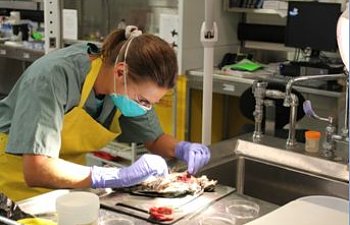
NECROPSY (autopsy)
(fix SECTION and link to KATS pages)
How to Send a Bird for a Necropsy post #81844 post #149474
DIY necropsy https://www.backyardchickens.com/t/...w-host-sally-sunshine/129880_20#post_17335228
necropsy lab finder post #14628
Avian Necropsy Examination 11 VIDEOS CLICK HERE STEP BY STEP
Avian Pathology IMAGES info CLICK HERE
Kathy necropsies https://www.backyardchickens.com/t/1069296/lame-chicken-exam-necropsy-pictures-added
Disclaimer: Please note this information is offered as friendly advice only and, whilst we have made every effort to ensure it is accurate, we can not be held responsible if it proves not to be useful in your case!
FOR MORE Poultry INFORMATION AND NOTES PLEASE CLICK HERE for Complete Guide to Incubation, Poultry Raising, Care and much more!



